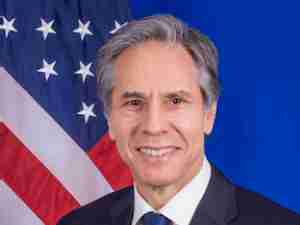A top transportation executive for 1,400-store retailer Target Corp. believes the port terminal industry must embrace a cooperative approach to enhanced productivity in order to facilitate an ever-increasing flow of goods.
"It may be a bit Polyanna-ish, but I believe it's time we opened things up and shared what our best practices are," Rick Gabrielson, senior manager of import transportation for Minneapolis-based Target, said in his Nov. 29 keynote address at the TOC 2005 Americas conference in Savannah, GA.
"We shouldn't be afraid to talk of improving productivity. It's not a bad thing," Gabrielson said. He noted that advancing the number of moves per hour for container cranes, from the current rates of 20-something at many US port facilities to closer to the pace of 40-something at some facilities elsewhere in the world not only would enhance productivity, but also reduce emissions.
Gabrielson cited the significant industry trend to bring imports from Asia into the United States through alternate ports - in addition to those in traditional West Coast gateways - a trend that began developing following the fall 2002 West Coast port union lockout. That trend has continued because of West Coast congestion concerns.
"Shippers are really beginning to take a look at their networks and diversify where they put their product," he said.
Target is a prime example, as it plans to open (by early 2007) a two million-square-foot distribution center in the Savannah River International Trade Park, five miles from the gates of the Georgia Ports Authority's Port of Savannah. It will be Target's third US distribution center, augmenting those already in place on the West Coast.
The Target facility will be opening in an area that already is home to a dozen such centers, according to Doug Marchand, GPA executive director. Those Savannah area distribution centers combine to cover 12 million square feet and, conservatively, generate 500,000 teus of cargo per year for the Savannah port, Marchand said.
Target is joining others in developing alternative Asian gateways in efforts to maintain a reliable supply chain, Gabrielson said. That effort also entails minimizing supply chain costs in the face of fuel surcharges, traffic mitigation fees, security charges and proposed container fees, he said.
Importers must increase speed to get product to market while reducing inventories; must invest in private security solutions; must minimize infrastructure investment; and must challenge government-imposed fees, said Gabrielson. Gabrielson is a founding member and sits on the board of the Waterfront Coalition, serves on the advisory board for the US Merchant Marine Academy's Global Maritime and Transportation School (GMATS) and is vice chairman of the Marine Transportation System National Advisory Council (MTSNAC).
Efforts to maximize productivity of existing infrastructure may also include addition of more mid-week sailings, encouraging extending hours of operation (through such means as the PierPass system), implementation of chassis pools and engaging in better business forecasting and information sharing, he said.
"We've got to look at beginning to shrink dwell time," he said, suggesting that amounts charged for containers sitting on a dock be increased and/or that such containers be moved off the dock at the shipper's expense. "Our ports are not terminals. They're not warehouses. Our terminals are only so large."
Gabrielson also urged expanded investment in intermodal rail, including through tax incentives. He also called for incentives for truckers to invest in cleaner, more efficient equipment; investments in "last-mile" port connector projects and truck-only lane projects; and a cautious approach to short-sea shipping opportunities, which may prove particularly beneficial in the US Northeast.
He cautioned that infrastructure congestion leads to environmental concerns, which in turn lead to community pushback, which then leads to what he termed "unhelpful state an








